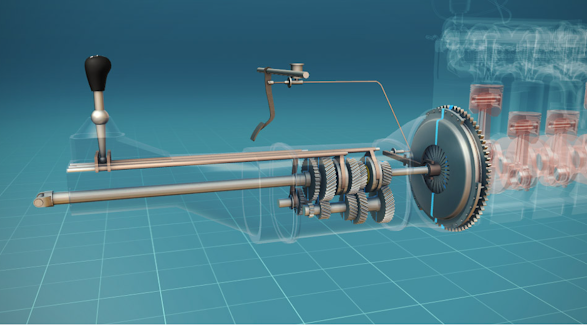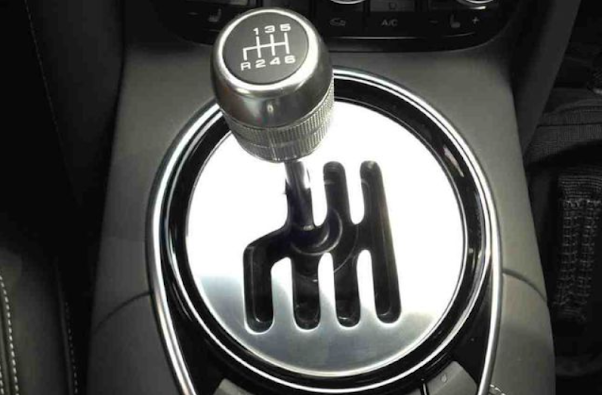Manual vs Automatic Cars: Which Should You Choose?
There was a time when automatic vehicles were quite rare to find. Only a handful of auto manufacturers and makers used to offer auto variants. Today things are fast-changing; now, automatic transmission features can be found in budget-friendly cars. The main reason behind this is the fast-changing preference for automatic transmission, which comes with the perk of long-commuting hours.
But for some, knowing the difference between an automatic transmission and manual transmission is still a topic of mystery. Therefore, in this blog, we have come up with relevant information about automatic transmission versus manual transmission. This blog will help you to do better car shopping.
How does transmission(Gearbox) work?
A car’s gearbox is the soul of every vehicle. It moves gears that power wheels which help the car move forward or backwards. This is also termed transmission, which is of mainly two types. The manual transmission and automatic transmission. In a manual transmission, the gears and clutch pedal need to shift to supply power to the wheels. On the flip side, with an automatic transmission, the car is powered with mechanical components that change the gear and require less or no manual intervention.
Mainly, cars can be classified into two categories based on a manual or automatic transmission. Automatic transmission has different types, such as DCT ( Dual-clutch Transmission), CVT ( Continuously Variable Transmission), and the latest and most cost-effective version AMT ( Automated Manual Transmission).
What is the manual transmission?
A manual gearbox or transmission requires manual intervention where the driver needs to take care of the gear left, the clutch pedal, and acceleration. The driver shifts the gear and the clutch pedal, which sends power to the gearbox; the power reaches the wheel, and the car comes into motion.
What is automated transmission (AT)?
The automatic transmission uses mechanical components that automatically change the gear without any interference from the driver to shift the gear level or the clutch. The market for the automatic transmission is increasing because of less manual effort.
What is the continuously variable transmission?
The CVT gearbox uses a pulley or belt to shift at various speeds. CVT transmission gets as much power as possible out of a smaller engine. This helps the vehicle to get quick acceleration and become more responsive.
Automatic transmission VS Manual transmission
Automatic transmission Vs Manual transmission can pull an exciting debate together. For comfort and ease to use, nothing beats an automatic transmission. After all, lesser efforts mean a lower fatigue rate. But people are still confused as to which transmission to go with. Let’s pull some layers of both the pros and cons of automatic and manual transmission here-
Manual transmission
Manual transmission is typically termed a stick shift. In a manual transmission, the driver must shift gears manually as they accelerate or stop their car or any other vehicle. The clutch pedal also shares mighty importance in manual transmission. Pressing down the clutch halts the power going from the engine to the gearbox so you can shift gears accordingly.
Fast facts
Require maximum driver efforts: Drive has to select and shift to the desired gear.
Less demand; only 3% of the cars with manual transmission are sold in the US.
Popular in Asia and Europe- Over 80% of the car with manual gearbox are sold.
Pros
- Lower purchase price of the car
- Fuel efficient
- Cheap service
- Superior acceleration
Cons
- Requires practice to master manual transmission
- The lower resale value of cars
- Not as widely available
- Difficult to drive in stop and go traffic
Automatic transmission
Nothing can beat the sheer comfort of an automatic transmission. One of the best things is that it is easy to use for beginners. The automatic transmission comes with just two pedals to deal with, which doesn’t create confusion for learners. Paddle shifters are easy to use as well. A torque converter is connected to the drivetrain, which works as a clutch on an automatic transmission.
Fast facts
Requires significantly less driver input- Just put the car in driver and enjoy your journey! Popular in the US- 95% of the vehicle comes with automatic transmission.
Pros
- Less confusion and easy to use
- Available everywhere
- Works great in stop and go traffic
- Good for beginners
- Higher resale value
Cons
- Higher repair costs
- Higher purchase value than manual cars
- Less fuel-efficient than manual transmission
Which transmission to select?
You can go with the transmission that goes well with your needs. There are various aspects, such as budget, milage, and on which terrain you’re driving. If you’re a city driver, the automatic transmission is best suitable for you as it’s easy to use for stop-and-go traffic. If you’re looking for driving experience and performance, you should consider a manual gearbox. If you’re not a pro-driver, always stick to an automatic transmission.
Closing thoughts
There you’ve it. The pros and bad bits about manual as well as automatic transmission. We hope this post has cleared the fog of confusion you had before between automatic and manual transmission. So which one do you prefer?- automatic transmission or manual transmission. Tell your answers in the comment section below...(continue reading )






Comments
Post a Comment